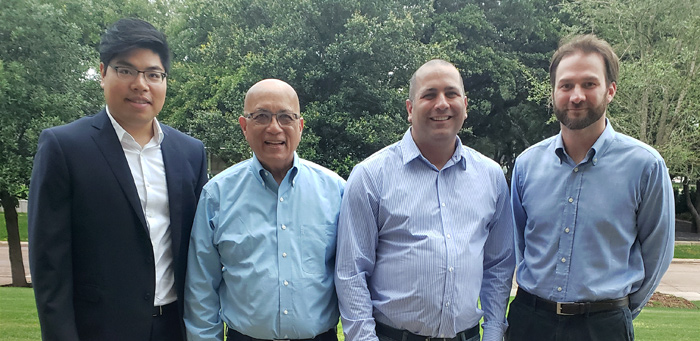Business analytics graduate students in the Naveen Jindal School of Management at The University of Texas at Dallas recently helped a local nonprofit map a route to reducing childhood poverty.
Chung-Min (Jack) Chen MS’19 and Vandhana Kalyanaraman MS’19 knew they would work on a project with real-world implications when they enrolled in Dr. Ron Bose’s analytics practicum course during their final semester last spring.

The data analytics project for Child Poverty Action Lab (CPAL), a Dallas initiative unveiled in 2018, focused on one of the major points of the initiative — improve the accessibility via public transportation to jobs that pay a living wage (defined by U.S. Census Bureau as jobs paying $3,333 per month).
The students investigated what challenges families who rely on public transportation face in accessing jobs, medical clinics and grocery stores versus families who have access to personal vehicles.
The students worked closely with Robert Mundinger, who runs TheMap.net, a website that allows users to create custom maps from a wide variety of demographic data points for the city of Dallas, and presented their results to Alan Cohen, executive director of CPAL.
In their analysis, the students determined that 35% of living-wage jobs in Dallas are accessible within 30 minutes via public transportation such as Dallas Area Rapid Transit (DART). The students found 69% of the jobs can be reached within an hour. Long daily commutes and the lack of public transportation are significant burdens for lower-income families.
To help address these problems, the students recommended subsidized ride-share solutions, the deployment of electric scooters to inaccessible areas and an increase in DART services during peak commute times.
“Students often have the expectation that they are going to have nice, clean proprietary data sets to work with. That’s not how it works in the real world. Nobody’s going to give you the data; you have to go find it. To get the answers you want, you need to be able to use public data as well as proprietary data. That is the skill the students were forced to learn.”
Dr. Ron Bose, clinical professor of information systems in the Naveen Jindal School of Management
The idea for the project came about after Bose read a D Magazine article describing Mundinger’s work using mapping software for the city. Bose contacted Mundinger and told him he wanted to introduce Mundinger’s work to his students. Getting students involved in service projects would teach them to use their analytics skills to solve problems and make a difference in the community, said Bose, who is a clinical professor of information systems and director of the Center for Information Technology and Management.
“We get projects from many large for-profit companies, but I know full well that often they can do the project better than my students can,” he said. “They have the resources to do those kinds of things whereas most nonprofits don’t have as many.”
Mundinger, who had worked with Cohen, told him about Bose’s idea. Cohen jumped on the opportunity to involve students, believing ongoing data analysis to be a key ingredient for making CPAL’s road map achievable.
“The road map shows us a set of outcomes related to each of our categories; if we are able to reach this outcome over a 20-year period, cumulatively, then that would get us to a 50% decrease in child poverty,” said Cohen, who will present the students’ work to community and government leaders in an attempt to help improve accessibility. “A lot of the work done by this class was helping us break these problems into smaller and smaller pieces so that we could find some that are actually actionable.”
The students quickly learned that real-world projects do not always come with data sets perfectly suited for them. They had to cull through data from the Census Bureau’s American Community Survey, an ongoing project that compiles reams of demographic data ranging from commuting patterns and characteristics to job accessibility and wages. The students also learned how to access public data and software tools provided by companies such as Google.
“Students often have the expectation that they are going to have nice, clean proprietary data sets to work with,” Bose said. “That’s not how it works in the real world. Nobody’s going to give you the data; you have to go find it. To get the answers you want, you need to be able to use public data as well as proprietary data. That is the skill the students were forced to learn.”
Recent graduate Kalyanaraman said: “It was a really good learning experience. In other classes, we use what we learned during the semester in that one particular course. With this class, we took everything we had learned throughout the master’s program and put it together in one single project.”
Chen, who graduated in May, started the project knowing that his work would potentially help reduce childhood poverty in Dallas.
“That really inspired us to do more,” he said. “We thought more about what we could actually do to use our abilities to help people.”